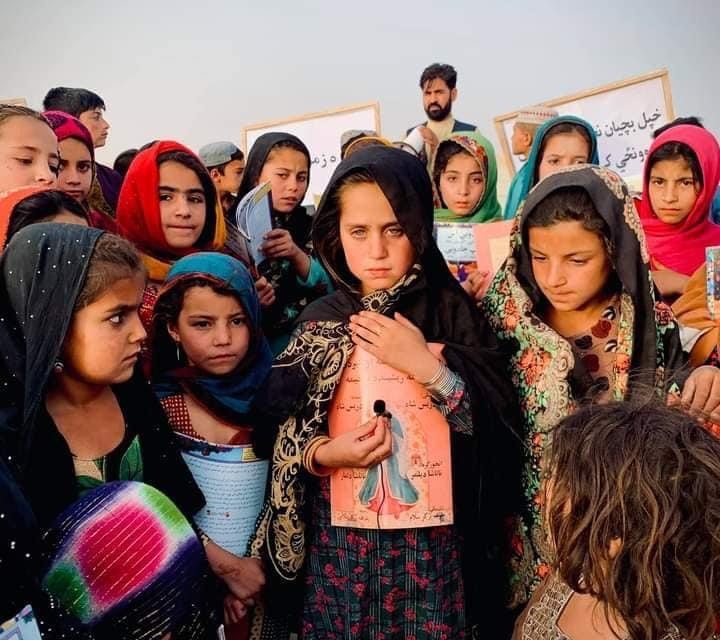Photo: PenPath
Dr Amit Chandra and Ahmad Zaki Manawi write for EA:
The government of Afghanistan plans to declare the 2020s the “Decade of Education”, seeking to establish universal access to quality schools for all children.
Announcing a label is one matter, fulfilling it is far different. For its decade, the government needs to employ creative thinking and initiatives for the millions of out-of-school children across the country.
The Afghan Constitution recognizes education as a fundamental right of children, and the 2008 Education Law calls for nine years of free, compulsory instruction beginning at age six. There are roughly nine million children, and the number is growing in a country with one of the highest rates of population growth in the world.
Afghanistan had roughly 16,400 schools in 2015, nearly a five-fold increase since 2001. Yet there are still more than 3.7 million children out of school, 60% of them girls. Overcrowding is widespread, and a shortage of safe and appropriate school buildings and facilities means that lessons are often conducted in makeshift classrooms or out in the open. There is an overabundance of unqualified, inexperienced, and untrained teachers, and rampant corruption at every level of the education system makes quality universal access a distant prospect.
See also Nargis’s Story: Meeting Afghanistan’s Challenge for Women and Education
Public-Private Partnership
One possible solution to Afghanistan’s education challenge is a link between the public and private sectors. The focus of the public sector is on equitable and inclusive growth while the focus of the private sector is quality and efficiency. A public-private partnership (PPP) could combine the best of both worlds.
PPPs are becoming increasingly common around the world. Afghanistan has a national PPP policy, and the arrangement is already proving useful in large-scale infrastructure development projects. The capacity of the Afghan government are limited, but the private sector has the necessary resources and initiative to deliver.
One example of the potential is the New School Program in Punjab Province in neighboring Pakistan, which seeks to establish schools in areas where government or private schools are unavailable. The program enlisted support from private-sector entrepreneurs to establish new schools in remote and under-served areas. More than 2,400 educational facilities have now been launched.
India’s Grant in Aid is one of the oldest models of PPP in the education sector. Under this partnership model, schools are established by private, non-profit organizations using their own funds. After operating successfully for a minimum of three years, the schools receive grants from the government to cover all recurring expenses, thus helping make the schools and the partnership model sustainable in the long-term. More than 16 million elementary school students have been successfully enrolled in Indian schools under the model.
In the Philippines, the Senior High School Voucher Program helps provide all students who complete grade 10 — junior high school — with a school-fee voucher to attend private senior high schools. The model allows the students to gain first-rate education at a marked-down price. Currently, more than 19 million senior high students have benefited from this program in the Philippines.
Is PPP Possible in Afghanistan?
Following the fall of the Taliban regime in 2001, private sector involvement was established in Afghanistan’s educational system. In 2004, the first private school, launched as an entrepreneurial initiative, was opened in Kabul. By 2016, the number of private schools in Afghanistan was more than 1,600, distributed across 31 provinces and providing general education to more 350,000 students, 100,000 of them girls.
Due to the low purchasing power of Afghan parents, the majority of the national private schools are classified as “affordable private schools” — low-cost private education providers. On average, students at private schools perform better on key measures than their peers in government-run public schools. Last year, the highest mark on the Kankor — the entry examination for public universities — was scored by a student from the Afghan-Turk School in Kabul.
Recognizing this promising record of success, the Afghan government and the education ministries should consider engaging the private sector, using PPP as a model, to deliver universal education to all children. Along with the design of the modeals, the Afghan government should ensure the ground is ready for investment in education. And the easing of the strict regulatory framework will not only ensure comparative quality, but will also encourage more entrepreneurs and private-sector support.
Dr Amit Chandra has a decade of experience in the field of school education. Ahmad Zaki Manawi is a senior project officer for The Asia Foundation in Afghanistan. The views and opinions expressed here are those of the authors, not those of The Asia Foundation.

